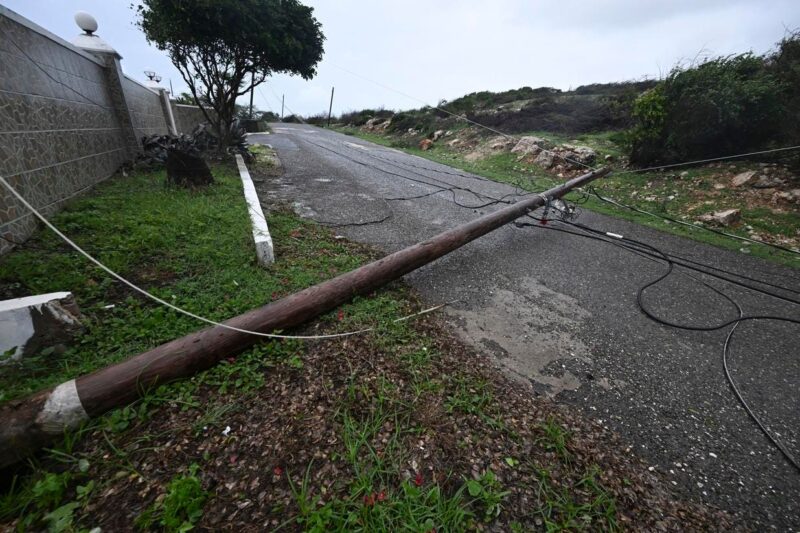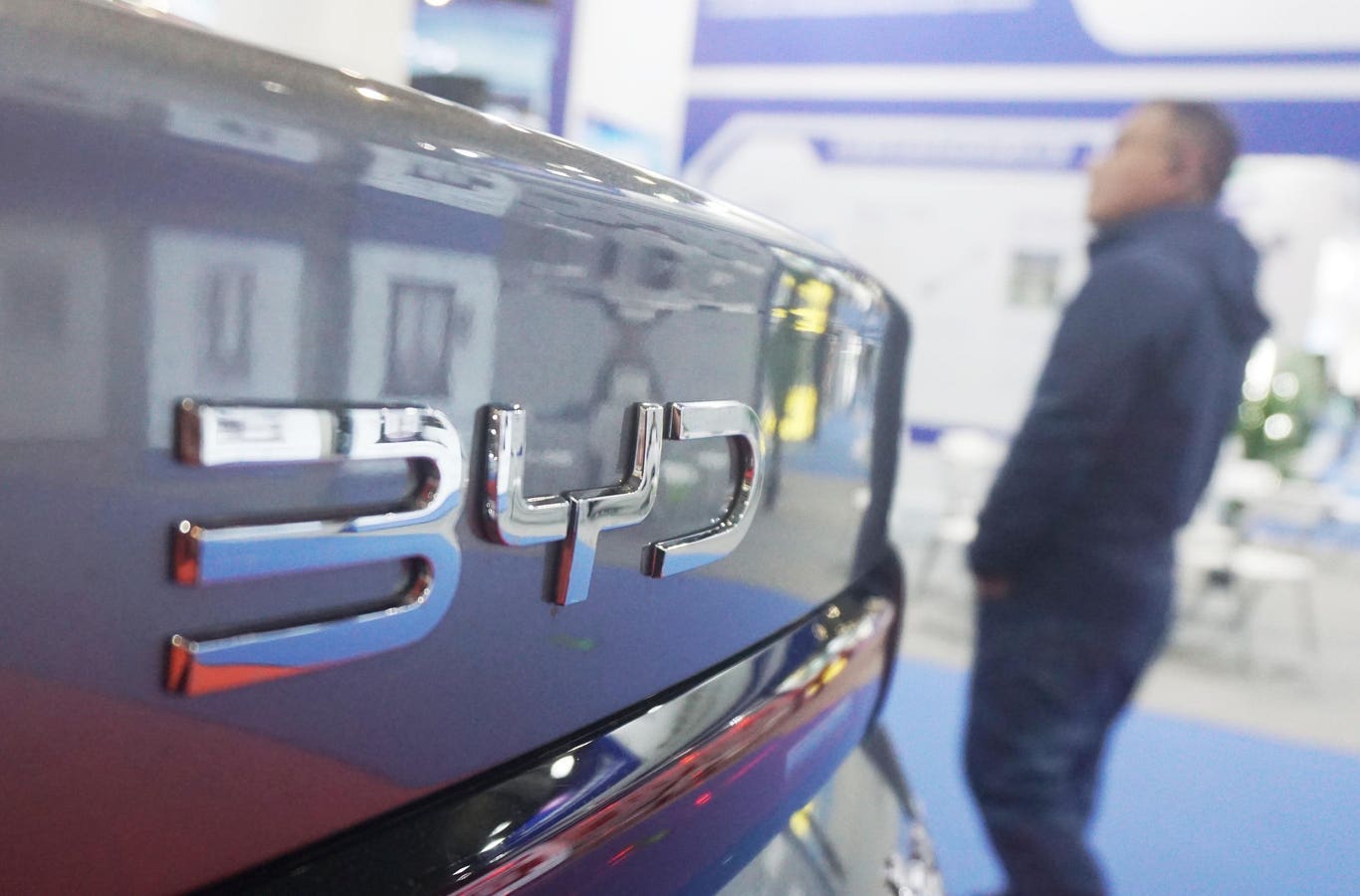A fallen light pole is seen on the Sugar Man’s beach main road in Hellshire, St Catherine parish, near Portmore, as Jamaica starts to feel the effects of Hurricane Mellisa on October 26, 2025. Hurricane Melissa, already a major category 4 storm, gathered steam Sunday as it took aim at Jamaica and other parts of the Caribbean, with forecasters predicting catastrophic flooding and urging residents to seek shelter immediately. (Photo by Ricardo Makyn / AFP) (Photo by RICARDO MAKYN/AFP via Getty Images)
AFP via Getty Images
As hurricanes intensify and grids strain, home battery systems are moving from luxury to necessity. From Tesla’s Powerwall to FranklinWH’s whole-home solution, new technologies are redefining how homeowners achieve safety, savings, and resilience.
The Rising Case for Home Energy Storage
As climate extremes multiply, reliable power is no longer guaranteed. In hurricane-prone regions like Florida and the Caribbean, extended blackouts can disrupt everything from refrigeration to communications. Pairing solar power with battery storage is becoming the ultimate resilience strategy.
According to a 2025 Stanford University study, roughly 60% of U.S. households could cut their electricity bills by 15% with rooftop solar and battery storage, while 63% could sustain about half of their energy needs during a blackout. In the Caribbean, distributed solar-plus-storage microgrids could reduce outage durations after major storms.
That urgency is reflected in hard numbers. According to Wood Mackenzie’s U.S. Energy Storage Monitor in 2024, the residential storage market exceeded 1,250 megawatts in 2024, the highest year on record and 57% above 2023 totals. The momentum carried into the final months of the year, with a record-breaking 380 MW of residential solar systems installed in Q4 2024 alone, a 6% increase over the previous quarter. For homeowners, that surge reflects more than a green trend and is a clear signal that reliability and resilience are now driving the solar-plus-storage boom.
Home battery energy storage
getty
Comparing Home Storage based On Innovation And Safety
According to Tesla’s 2024 Powerwall 3 technical sheet, the system delivers 13.5 kWh of usable capacity and 11.5 kW of continuous output, with an integrated solar inverter that lowers installation costs. Tesla now uses lithium-iron-phosphate chemistry which is safer than its earlier nickel-based cells and offers a 10-year warranty and seamless app control for home energy management.
The Enphase IQ Battery 5P, introduced in late 2023, is designed for modular expansion. Each 5 kWh unit is UL 9540/9540A certified and uses LFP cells for fire-resistant performance. UL 9540 refers to system-level safety and UL 9540A denotes fire-propagation safety. In other words, UL 9540 certifies that a storage system performs safely under stress, while UL 9540A ensures that if a single cell overheats, the event will not spread or cause ignition. According to Enphase Energy’s 2024 investor report, more than 150,000 of its battery systems are now enrolled in virtual power plants worldwide, illustrating how software is turning home batteries into grid assets.
In a recent interview with Vincent Ambrose, Chief Commercial Officer of FranklinWH, he indicated that the FranklinWH aPower S emphasizes whole-home backup and industrial-grade safety. According to FranklinWH’s R&D team, it provides 15 kWh of usable capacity and up to 11.5 kW of continuous output, enough to power large household loads, including air conditioning. It operates from –4 °F to 131 °F, features 16 temperature sensors per unit, and carries a 15-year warranty which is one of the longest in the segment. Safety is its standout feature. The aPower S passes UL 9540 and UL 9540A testing.
In essence, Tesla leads on ecosystem integration, Enphase excels in modular flexibility, and FranklinWH advances durability and whole-home power, three paths converging on a safer, smarter grid future. As prices decline, the economics are clear: homeowners in high-risk regions are pairing energy independence with peace of mind.
Why It Matters for Florida and the Caribbean
When a Category 4 storm hits Florida or Jamaica, the grid can stay down for days depending on the level of damage. With a solar-plus-battery system, a household can keep essentials like refrigeration, lighting, and communication until utility service returns. According to the Caribbean Electric Utility Services Corporation, the region’s energy systems remain acutely vulnerable to extreme weather due to aging infrastructure, mountainous terrain, limited redundancy, and supply-chain constraints. These weaknesses were evident during Hurricane Beryl, when approximately 158,101 customers across multiple islands were left without power as high winds and torrential rain crippled utility networks. The prolonged outages disrupted homes, businesses, and critical services, exposing the urgent need for modernized disaster-preparedness frameworks and resilient grid infrastructure.
Storm surge is pictured before the arrival of Hurricane Melissa in the Caribbean Terrace area of Kingston, Jamaica, on October 25, 2025. Deadly storm Melissa strengthened Saturday afternoon into a Category 1 hurricane, with rapid intensification expected over the weekend as it cut a worryingly slow course toward the Caribbean island of Jamaica, forecasters said. (Photo by Ricardo Makyn / AFP) (Photo by RICARDO MAKYN/AFP via Getty Images)
AFP via Getty Images
Now, with Hurricane Melissa threatening Jamaica as a Category 5 storm, those vulnerabilities are once again in sharp focus. Melissa is bringing catastrophic winds exceeding 160 mph, storm surges up to 13 feet, and rainfall nearing 40 inches in some coastal parishes. Jamaica’s exposed grid and coastal topography make it particularly susceptible, underscoring why investments in decentralized renewable generation and battery storage are no longer optional, they are essential to the region’s survival and recovery.
The Way Forward
In an era of intensifying hurricanes and fragile grids, home battery storage has become the cornerstone of energy resilience. Battery prices are down and are now combined with safer chemistries and smarter software. These are empowering homeowners to take control of their power security. Systems like Tesla’s Powerwall, Enphase’s modular IQ Battery, and FranklinWH’s whole-home aPower S reflect a global shift from dependence to independence, turning homes into microgrids that sustain life and stability when the grid fails. For hurricane prone regions like Florida and the Caribbean, investing in solar and battery storage is the pathway to survival, sustainability, and the ability to power through the storm.









